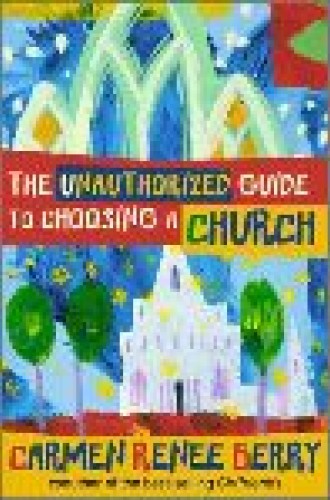The Unauthorized Guide to Choosing a Church
Part travel guide, part history and theology and part entertainment, Carmen Renee Berry’s book delivers what the title promises: guidance through the twists and turns, options and choices available to anyone trying to find a spiritual home. Berry includes chapters on how to think about what you might be looking for, as well as warning signs for which you ought to keep an eye open.
As a guidebook Berry’s is closer to a book by travel writer Rick Steves than to, say, the Michelin guides. Though the latter cover it all, they’re tedious and make you feel guilty about not managing to see everything. Steves covers it all too, but his guidebooks are fun to read and don’t lay a guilt trip on you for waltzing quickly through long stretches of the Vatican Museum. Like Steves, Berry writes with travelers in mind, giving them a high-relief overview before plunging into particulars. She explains where to find more information, as well as what to wear and what to expect when you visit various churches. She gives thumbnail summaries that include historical pedigree, worship style, “trinity affinity” (i.e., which person of the Trinity is most prominent here) and a “clout continuum” indicating where different factors like scripture, tradition and personal experience rank for folks in a given denomination.
Berry does work within self-imposed limits, which is necessary given the staggering volume of her potential subject matter. The main one is that she sticks to Christian churches. You will not even find the Church of Jesus Christ of Latter-day Saints or Christian Science—only the Orthodox, Catholic and Protestant families and the subsets of the latter.
Berry organizes the bulk of the guide around denominational groupings. Each account includes a historical overview of the denomination, a summary of its characteristics, and a section on “what to expect when you visit.” The information is reliable, though her approach obscures the fact that church visitors will experience a congregation, not a denomination, and that there is variety within denominations.
We are told these days that we live in a postdenominational era. Berry’s guide shows us how much individual congregations continue to be the children of their denominational forebears. Still, since denomination is only a part of the story and experience, readers need to treat this book as a starting point.
In reading the history of various denominations, one is struck by the fact that strong, enthusiastic, interesting and challenging religious leaders have so often complicated matters by spawning a new family of faith. Couldn’t these people have found a way to offer their particular gifts without creating a whole new church or denominational group?
Who should buy this book? Public libraries and church libraries ought to have it, the former to help seekers, the latter to help their constituents as they try to understand the pedigrees and gifts of other Christian groups. It would also be great to see it in high school and college libraries where many students are bewildered by the array of options. If we haven’t fully made it into the postdenominational landscape, we definitely have reached a time when most people don’t have a clue about what separates and defines the different denominations and congregations. Berry helps, and those who use her book will have some fun in the process.





